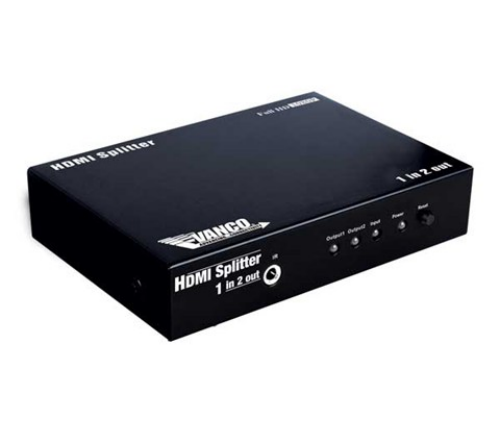Because, your normal splitter is like eight bucks. If you look at our selection of HDMI splitters, you’ll see that they range from just around fifty dollars to well over five hundred. That’s pretty impressive considering that most splitters tend to be incredibly inexpensive. Our blog readers repeatedly ask why these splitters are so expensive and if there’s any difference between the less expensive ones and the more expensive ones.
First of all you need to understand that most splitters are really relatively simple affairs. They take a signal and they send half of it to one port and half to the other. Each half gets a signal half as strong, and as you get into more complicated splitters like those used for satellite they also have special circuits to help route things where they should go. Some ports will pass power, some won’t, and there are circuits to make sure that something on port 1 won’t interfere with something on port 2.
On the other hand, an HDMI splitter is much more complex. HDMI is a constant two-way stream of information that helps protect the data stream from being pirated and also lets both the source device (like a DVR or media player) know what kind of signal to send the television. HDMI was originally set up to not be splittable at all, it was felt that splitting a signal encouraged piracy. You can learn more about that piracy concern here.
An HDMI splitter is always fighting a battle with the source device. It’s always trying to prove to that device that everything is hunky dory, that anything connected to it is perfectly legal, and it’s trying to avoid the source device stopping the signal from going out. Since information over an HDMI cable will automatically stop being sent after about two seconds unless the TV responds (again, piracy) the splitter has to constantly answer a barrage of questions from the source device, and it has to answer right all the time.
All those electronic gymnastics take computing power and that’s going to cost money. Not only that, but a more industrial-grade switcher is going to be much more reliable over time. You might not care if you have to reset your HDMI splitter every few weeks or so, but a bar that relies on an HDMI splitter to feed eight TVs in a bar is going to have a rebellion on its hands if the HDMI splitter fails at the wrong time. More expensive splitters have better quality materials and more effort has gone into programming them to be as close to 100% reliable as possible. More expensive splitters include low-noise amplifiers so that the split HDMI signal can go the full 50 feet while less expensive ones will shorten the possible distance you can achieve with the HDMI cables.
Still, from the user perspective, an HDMI splitter is a fairly simple affair. One cable in, many cables out. If that doesn’t work for you, you need to think about a matrix switcher. HDMI matrix switchers are complex devices that can take a whole bunch of different inputs (for example eight different HD satellite receivers) and put them out to as many TVs as you want. They’re designed to let you pick which source goes to which TV any time you want — you could have one receiver feeding 16 TVs or each of 8 receivers feeding two TVs or anything in the middle. There’s a lot of electronic wizardry that goes into getting something like that done and electronic wizardry costs money.





